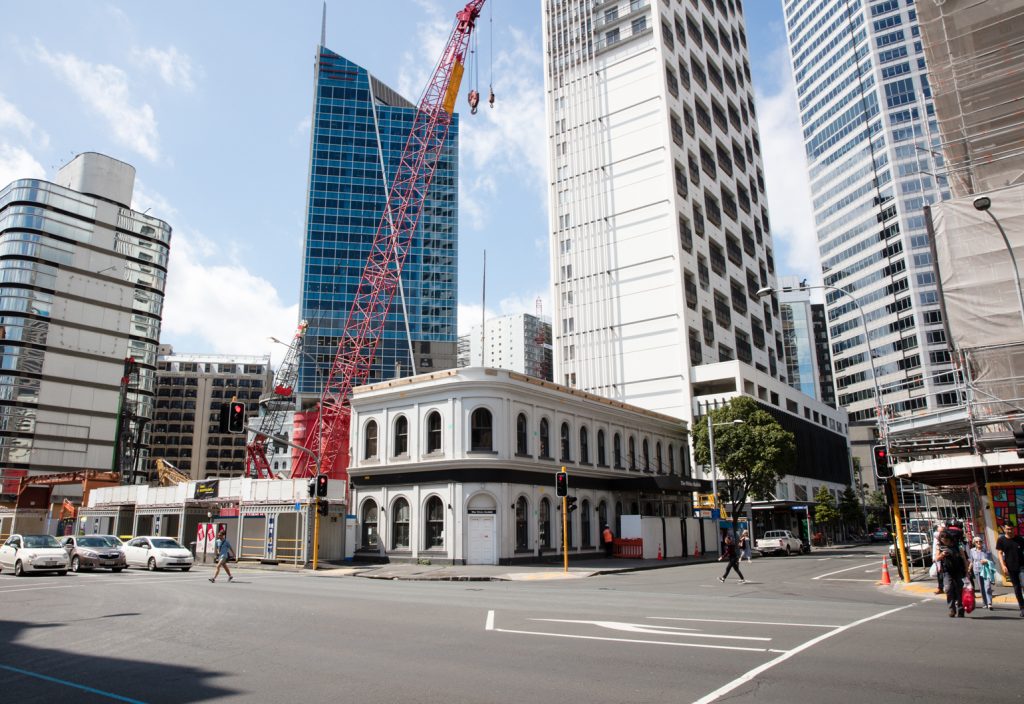Although buildings might appear to be static structures, they are constantly moving, affected by even the minutest vibration of someone walking past. What if we could record these vibrations to develop a detailed structural analysis of a building?
This is the premise of structural risk assessment and management (STRAAM) technology, which has been developed over a number of years to capture a structure’s movements to analyse how it performs.
The technology integrates cloud-based data collection and algorithms for a quick and accurate measure of a structure’s performance, using a Dynamic Signature to represent a structure’s ‘as is’ condition.
Components of the technology include a data logger known as an SCG (structurocardiograph), which digitises data collected from a building at 200 times a second, enabling data to be observed in detail.
This SCG is connected to accelerometers (originally developed for military purposes) on the building that measure displacement, tilt and dynamics.
The accelerometers are so sensitive they can detect even minute vibrations such as someone walking inside a building. Meanwhile, strain gauges measure deflection.
“[The technology] takes information from these very sensitive accelerometers and from that, it runs through an algorithm that then allows us to identify the natural frequencies of a structure,” said James O’Grady, engineer and sales manager at Mainmark.
While the technology can be used as a one-off application or over the duration of a project, it can also be used to assess buildings and other monolithic structures after natural disasters, such as storms and earthquakes, to tell a client if a building has been damaged and the extent of any damage.
For example, a building in New Zealand was affected by the 2016 Kaikoura earthquake that hit the South Island of the country.
Following the earthquake, it had been assessed and the owner had started the fitout and repair, with the company asking to use STRAAM on a series of buildings, including this one.
When the team carried out the STRAAM, they identified a weakness in one part of the building and notified the client to send engineers back in for another inspection.
“They went back in to have a look at the building and they found that there was actually quite substantial damage that couldn’t be seen,” O’Grady said.
“There was severe cracking through floor panels and there was separation of the floors.”
The repair work was so advanced that it was almost ready for people to move back in.
Rooftop review
The technology has also been used on a rooftop childcare project in New South Wales. The childcare centre had been built on an old brick building, but there were no designs or drawings for the original structure.
A floor had also been added above the original roof of the building, with no records for this either.
While there was an existing outdoor play area, the client wanted to create a more landscaped area for the children to play in.
However, without original designs, it seemed like there was no simple way of determining whether the increase in structural loading was safe through traditional engineering means.
“By doing a STRAAM assessment of the building, and then comparing that to a finite element model, we were able to fine tune the final element model to match the recorded behaviour of the building,” O’Grady said.
“We actually realised that what they were intending to load on that longest span wasn’t going to be Australian Standards compliant – it would have exceeded what a safe load would have been at that point,” said Max Krudrenko, technical manager at Mainmark.
They then used that refined model to determine the amount of landscaping that could go onto the building and where it could be placed.
Over the next 12 months, O’Grady said as the cost of the technology continues to drop, it will become even more accessible. This could be particularly beneficial due to the devastating effects natural events can have on both homes and businesses.
